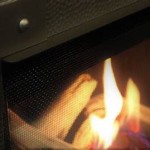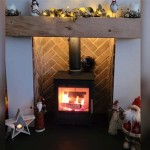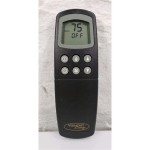Understanding Outside Gas Fireplace Burners: A Comprehensive Guide
An outside gas fireplace burner is the heart of any outdoor gas fireplace, dictating its aesthetic appeal, heating capability, and overall functionality. Choosing the right burner requires careful consideration of several factors, including the desired flame pattern, heat output, installation requirements, and safety features. This article provides a comprehensive overview of outside gas fireplace burners, exploring different types, key considerations, and maintenance practices.
Gas fireplace burners offer a convenient alternative to traditional wood-burning fireplaces, providing instant flames without the need for wood storage, hauling, or cleanup. They are available in a wide array of designs, ranging from simple linear burners to intricate multi-flame configurations. The type of burner selected will significantly impact the visual impact and thermal performance of the outdoor fireplace.
The popularity of outside gas fireplaces continues to grow as homeowners seek to extend their living spaces and create comfortable outdoor entertaining areas. A well-designed gas fireplace can transform a patio or backyard into a cozy and inviting gathering spot, extending the usability of outdoor spaces throughout the year.
Types of Outside Gas Fireplace Burners
The market offers various types of outside gas fireplace burners, each with its own characteristics and advantages. Understanding these different types is crucial for selecting the most appropriate burner for a specific application.
Linear Burners: Linear burners are characterized by their long, straight flame pattern, creating a modern and sophisticated aesthetic. They are often used in contemporary outdoor fireplace designs, offering a clean and minimalist look. Linear burners are available in various lengths, allowing for customization to fit the specific dimensions of the fireplace enclosure. They typically provide a consistent and even flame across their entire length, contributing to a uniform heating effect.
The simplicity of linear burners makes them relatively easy to install and maintain. However, their heat output may be less concentrated compared to other burner types, requiring a larger burner area to achieve the desired level of warmth. Linear burners often utilize a single gas inlet, simplifying the gas line connection. Available materials may include stainless steel for maximum durability.
Round Burners: Round burners, as the name suggests, produce a circular flame pattern. They are often used in more traditional or rustic outdoor fireplace designs, providing a classic and inviting ambiance. Round burners can be configured with a single flame ring or multiple concentric rings, allowing for varying levels of heat output and visual complexity. They are well-suited for smaller fireplace enclosures where a focused flame is desired.
The compact design of round burners often makes them easier to integrate into existing outdoor spaces. Their flame pattern tends to be more concentrated, providing a higher heat intensity in a smaller area. Round burners can be used with a variety of decorative media, such as lava rock or fire glass, to enhance their aesthetic appeal. Round burners can also be combined with linear burners to create custom looks offering both wide coverage and high intensity flames.
H-Burners: H-burners feature a distinctive "H" shape, providing a wide and even flame distribution. They are a popular choice for larger outdoor fireplaces, offering a balanced combination of aesthetic appeal and heating performance. H-burners create a generous flame pattern that fills the fireplace enclosure, providing ample warmth and a visually stunning effect. The design allows for a more even gas distribution across the burner surface, resulting in a consistent and uniform flame.
The H-shape helps prevent cold spots within the fireplace, ensuring a more comfortable and efficient heating experience. H-burners are often constructed from durable materials, such as stainless steel, to withstand the rigors of outdoor use. While offering superior flame distribution, H-burners may require a more complex gas line connection compared to simpler burner designs.
Multi-Flame Burners: Multi-flame burners employ a series of separate burner elements, strategically arranged to create a dynamic and visually captivating flame pattern. These burners often simulate the look of a natural wood-burning fire, offering a more realistic and immersive experience. Multi-flame burners can be customized to produce a wide range of flame effects, from gentle flickering flames to roaring infernos. They are ideal for homeowners who desire a more authentic and visually impressive outdoor fireplace.
The complexity of multi-flame burners often translates to a higher price point and more intricate installation requirements. However, the unique aesthetic appeal and realistic flame patterns make them a worthwhile investment for those seeking a premium outdoor fireplace experience. These burners often require precise gas pressure adjustments to ensure optimal flame performance.
Key Considerations When Choosing a Burner
Selecting the right outside gas fireplace burner involves several important considerations. These factors directly impact the performance, safety, and longevity of the outdoor fireplace.
Heat Output (BTU): The heat output of the burner, measured in British Thermal Units (BTU), determines the amount of heat generated by the fireplace. The appropriate BTU rating will depend on the size of the outdoor space and the desired level of warmth. Larger spaces will require burners with higher BTU ratings to effectively heat the area. Consider the typical climate conditions and the anticipated usage patterns when determining the optimal heat output.
Overly high BTU ratings can result in excessive heat, making the outdoor space uncomfortable. Conversely, insufficient BTU ratings may fail to provide adequate warmth, particularly during colder months. Consulting with a qualified HVAC professional can help determine the appropriate BTU rating for a specific outdoor space.
Fuel Type (Natural Gas or Propane): Outside gas fireplace burners are designed to operate on either natural gas or propane. It is crucial to select a burner that is compatible with the available fuel source. Natural gas is typically supplied through a municipal gas line, while propane is stored in a tank. Burners designed for natural gas cannot be used with propane without proper conversion, and vice versa.
Propane burners typically require a higher gas pressure compared to natural gas burners. Improper fuel type selection can result in inefficient combustion, incomplete burning, and potential safety hazards. Ensure that the gas line connections and regulator are properly sized and configured for the selected fuel type.
Material and Durability: Outdoor gas fireplace burners are exposed to the elements, requiring durable materials that can withstand the harsh conditions. Stainless steel is a popular choice due to its resistance to rust, corrosion, and high temperatures. Look for burners constructed from high-quality stainless steel, particularly 304 or 316 grades, for maximum longevity.
Consider the thickness of the stainless steel used in the burner construction, as thicker materials provide greater resistance to warping and deformation. Regularly inspect the burner for signs of wear and tear, and promptly address any issues to prevent further damage. Avoid using abrasive cleaners or harsh chemicals on the burner surface, as these can damage the protective coating.
Safety Features: Safety is paramount when operating any gas appliance. Look for outside gas fireplace burners that incorporate essential safety features, such as flame failure devices (FFDs) and automatic shut-off systems. FFDs automatically shut off the gas supply if the flame is extinguished, preventing gas leaks and potential explosions. Automatic shut-off systems can be programmed to turn off the burner after a certain period of inactivity, conserving fuel and reducing the risk of accidents.
Ensure that the burner is installed and connected by a qualified technician, following all applicable building codes and safety regulations. Regularly inspect the gas line connections for leaks, using a soap and water solution to detect any bubbles. Never operate the fireplace if there are any signs of gas leaks or malfunctions.
Maintaining Your Outside Gas Fireplace Burner
Proper maintenance is essential for ensuring the longevity, safety, and optimal performance of an outside gas fireplace burner. Regular cleaning, inspection, and adjustments are necessary to prevent problems and keep the fireplace operating efficiently.
Regular Cleaning: Over time, dirt, dust, and debris can accumulate on the burner surface, affecting its performance and potentially causing clogs. Regularly clean the burner using a soft brush or cloth to remove any visible debris. Avoid using abrasive cleaners or harsh chemicals, as these can damage the burner surface. For stubborn stains or buildup, use a mild detergent solution.
Before cleaning, ensure that the gas supply is turned off and the burner is completely cool. Carefully inspect the burner ports for any obstructions and clear them using a thin wire or pin. Periodically remove the decorative media, such as lava rock or fire glass, and clean underneath to remove any accumulated debris.
Inspecting Gas Lines and Connections: Regularly inspect the gas lines and connections for any signs of leaks or damage. Use a soap and water solution to check for gas leaks, applying the solution to all connections and joints. If bubbles appear, there is a gas leak. Immediately turn off the gas supply and contact a qualified technician to repair the leak.
Ensure that the gas lines are properly supported and protected from physical damage. Replace any worn or damaged gas lines immediately. Check the regulator for proper operation and adjust as needed to maintain the correct gas pressure.
Checking and Adjusting Flame Pattern: The flame pattern provides valuable insights into the burner's performance. A healthy flame pattern is typically blue with yellow tips, indicating efficient combustion. If the flame is predominantly yellow or orange, it may indicate incomplete combustion due to insufficient air supply or clogged burner ports.
Adjust the air shutter on the burner to optimize the air-to-fuel ratio. Consult the manufacturer's instructions for specific guidance on adjusting the flame pattern. If the flame is sputtering or unstable, it may indicate low gas pressure or a malfunctioning regulator. Contact a qualified technician to diagnose and resolve any issues with the gas supply or burner operation.
Professional Servicing: It is recommended to have your outside gas fireplace burner professionally serviced at least once a year. A qualified technician can thoroughly inspect the burner, clean it, and make any necessary adjustments or repairs. Professional servicing can help identify potential problems before they escalate and ensure that the fireplace is operating safely and efficiently.
The technician can also check the gas pressure, inspect the safety features, and test the ignition system. Professional servicing can prolong the life of the burner and prevent costly repairs down the road. Keep records of all servicing and maintenance performed on the fireplace.

Hpc Fire Lbof Electronic Ignition Outdoor Gas Fireplace Burner Kit

Fire Feature Burner

White Mountain Hearth By Empire Ventless Outdoor Traditional Premium Gas Fireplace 36

Hpc Outdoor Gas Fireplace And Chimney Professionals

Empire Wildwood Outdoor Log Set York County Natural Gas Authority

Outdoor Gas Fireplace Options And Ideas

How To Build An Outdoor Gas Fireplace Fireplaces Direct Learning Center

Empire Outdoor 42 Inch Stainless Steel Ventless Firebox With 30 Wildwood Log Set And Millivolt Harmony Burner Op42fb2mf Olx30wr Onr30 Hvacdirect Com

Best Outdoor Gas Fireplaces Direct Learning Center

Hpc Fire Duel Step Ei Outdoor Gas Fireplace Burner Kit Dbof28ei Ab16 Flame Authority
Related Posts








